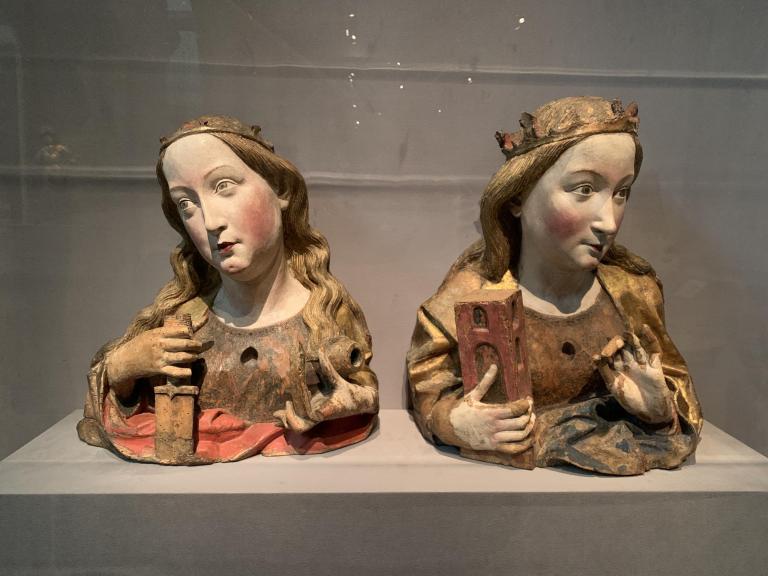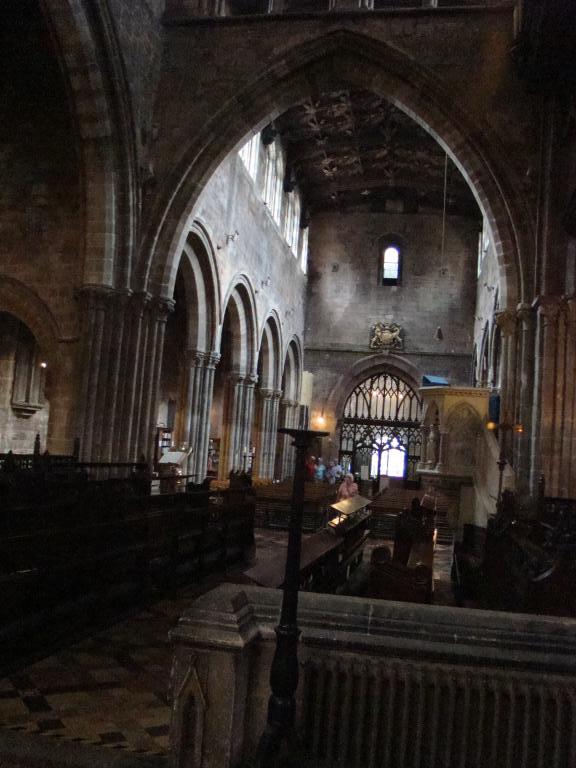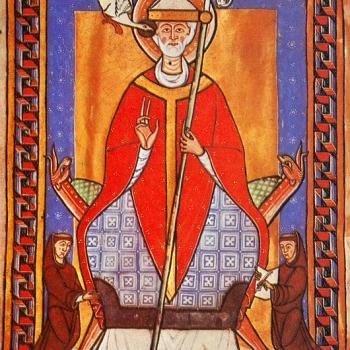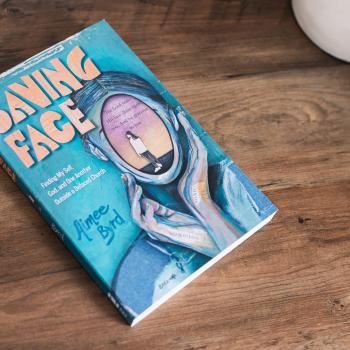 “On the road from Galway to the Cliffs of Moher on the west coast of Ireland, you might notice a nun in a telephone booth at Liscannor.”
“On the road from Galway to the Cliffs of Moher on the west coast of Ireland, you might notice a nun in a telephone booth at Liscannor.”
With this sentence—perhaps my favorite opening sentence of an academic book–Lisa Bitel introduces us to Saint Brigit of Kildare. For those of you who don’t know, Lisa Bitel is the Dean’s Professor of Religion and Professor of History at the University of Southern California. She is a Fellow of the Medieval Academy of America, co-editor of the volume Gender & Christianity in Medieval Europe, and author of six books on early medieval women—including a textbook I assign regularly, Women in Early Medieval Europe 400-1100. She has been named a Guggenheim fellow, a National Endowment of the Humanities (NEH) fellow, and a fellow of the American Council of Learned Societies.
In short, Lisa Bitel is a kick-ass historian. Which is why I thought of her when I first read Kevin DeYoung’s review of The Making of Biblical Womanhood.
You see, Lisa Bitel wrote Landscape with Two Saints: How Genovefa of Paris and Brigit of Kildare Built Christianity in Barbarian Europe. From her opening sentence (a nun in a telephone booth), Bitel’s argument underscores the problem with much of Kevin DeYoung’s critique: he is looking from the wrong perspective.
Let me show you what I mean.
In 1976 a medieval scholar named Joan Kelly asked a question that literally shook the foundations of her field. She asked what would happen if we looked at the Renaissance, an era known for its creativity, intellectual revival, and economic prosperity, from the perspective of women. She found that women living during the Renaissance did not experience either the success or opportunities of men. In other words, women did not have a Renaissance. What a difference perspective makes!
So let’s look at one part of Kevin DeYoung’s critique and see what happens when we flip it Joan Kelly style. This is what he asks: were Brigit of Kildare and Genovefa of Paris really bishops? According to DeYoung, Genovefa cannot be a bishop because her account is hagiographical and she wasn’t ordained (didn’t perform the sacraments, etc.). Brigit is even more problematic because her (hagiographical) ordination was mucked up, she rejected the ecclesiastical title, and—like Genovefa—she didn’t perform the sacraments.
But what if we change our perspective? What if we stop assuming that a hierarchal lens of (mostly white male) ecclesiastical authority is the correct perspective from  which to view church leadership? What if, instead, we considered the authority of Brigit and Genovefa from the perspective of early medieval Europe?
which to view church leadership? What if, instead, we considered the authority of Brigit and Genovefa from the perspective of early medieval Europe?
Let’s see what we find.
To begin with, did you know that during the first centuries of Christianity the ecclesiastical office of bishop emerged alongside the equally powerful role of holy men and women? As John Arnold reminds us in his introduction to The Oxford Handbook of Medieval Christianity, early Christianity was “operating still within the structure of the Roman Empire. It worked, that is, both through the political success of a class of office-holders given imperial privilege; and also through the localized cultic choices made by private citizens, whose material resources fostered and sustained the Church at a local level.” Sometimes these locally supported holy men and women complemented the newly emerging ecclesiastical offices; sometimes they openly challenged them; and sometimes they simply supplanted ecclesiastical authority. Indeed, one might argue that this is exactly what Brigit of Kildare’s saintly counterpart Patrick did (yes, that St. Patrick). “No British or Gallic authority authorized Patrick’s mission, and none consecrated him bishop,” Kevin Madigan explains. “In fact…Patrick informs us that he simply declared himself to be bishop.” Doesn’t it strike you as funny how DeYoung questions the record of Brigit’s ordination when there is no record of Patrick’s ordination? Patrick seems the quinessential holy man who simply takes ecclesiastical authority into his own hands.
So, what if instead of asking how Brigit and Genovefa compare with an ecclesiastical office built on the remnants of the Roman empire (which denied women most political offices anyway), we ask how they compare with an ecclesiastical office that often spilled over into the authoritative role of holy men and women?
There is little doubt that Genovefa’s hagiographer intentionally portrayed her as a surrogate bishop—a holy woman who functioned as ecclesiastical leader. While it is true she couldn’t officially be credited with the title (patriarchy was rooted even in fledgling ecclesiastical structures), she is portrayed in the same way as her male counterparts: taking care of Paris during a famine, traveling through the geographical areas she oversaw administratively, received by local dignitaries with the same honors usually reserved for male leaders, and establishing the religious structure to house both the patron saint of Paris and the ecclesiastical office in Paris. DeYoung assumes that Genovefa cannot be a bishop because she does not perform the sacraments, yet one of the primary occupations of earliest bishops was governance (see Madigan)—an office which Genovefa performed exceedingly well.
(Not to mention, even if Genovefa had performed the sacraments, she couldn’t have been portrayed as doing so by her 6th century hagiographer. Church councils banned women from performing the sacraments since the 5th century, which interestingly suggests women did perform them before this time.)
Regardless, Genovefa is portrayed as wielding power like a bishop. Or, as I quoted Bitel in The Making of Biblical Womanhood, Genovefa acts like a bishop. “Genovefa defies the paradigms that historians of previous generations have constructed for female saints. Neither martyr nor nun, she was a charismatic Gaulish noblewoman who marched around the Parisian basin like a Roman commander, biding kings, tribunes, bishops, and unruly neighbors to do God’s will.”
As for Brigit, one hagiographer did consecrate her as a bishop. It was accidental and she dismissed it, but it doesn’t change the authority she wielded. Bitel shows how Brigit’s hagiographers intentionally “made a case” for Brigit’s authority as equal to the male clergy, sometimes even surpassing it. For example, in one story she fell asleep during a sermon by Patrick. When she woke, she revealed a dream God had sent her. Patrick interpreted the dream as God declaring Brigit would spread the gospel alongside him. “The dream episode,” Bitel writes, “proved her intimate link to God and established her as the missionary equal of Patrick.” Isn’t it interesting that while Patrick was preaching the gospel, God revealed Brigit as called to preach the gospel too? In another example, Brigit employs a priest as a servant so that she can perform sacraments as needed. “In the gendered logic of the eighth-century Christian establishment,” Bitel writes, “Brigit did not baptize a man in church but wrought a miracle of conversion in domestic space. She could not act as a priest but took one as a servant.” Sure, Brigit didn’t perform the baptism herself. She just gave the orders for when it should happen.
DeYoung may refuse Brigit the title of bishop. But that doesn’t change what Brigit did. It doesn’t change how her hagiographers presented her as wielding ecclesiastical authority. It doesn’t change how she was recognized as authoritative by her medieval community. It is sort of like the Children’s Director at your local Southern Baptist church. She may not have the title of pastor, but she is still doing pastoral work.
Which brings us to the last attempt by DeYoung to defuse Brigit and Genovefa: are the hagiographical counts even true?
Well, let’s think about that. Why would male clergy—already invested in limiting women’s leadership—bother making up stories about powerful women who exhibited leadership? Maybe the better question is why did male hagiographers tell stories about powerful women leaders? Is it because they couldn’t suppress the reality of these women? Or maybe because they believed in the authority of these women and were trying to make them more acceptable to an ecclesiastical audience?
Once again, let’s look at the evidence. Did you know that only twenty years separated Genovefa’s death from her hagiographer’s text? Did you also know that Brigit’s narrative is rooted even more firmly in the historical landscape than that of her famous Irish counterpart Patrick? As Bitel writes, Brigit’s hagiographer Cogitosus was at least as familiar with her as Patrick’s hagiographers were with him. But Cogitosus also had the solid walls of Kildare. “Brigit’s own settlement, founded by her as home, whereas Patrick had never been abbot or bishop of a particular place. [Brigit] was a native. He was not. What is more, Patrick’s burial site was disputed, and his relics scattered. Kildare was Brigit’s chosen resting place. The body was there for all to see. For Christian followers of Brigit…Cogitosus offered a uniquely reliable resource. Kildare, in all its built glory, was proof for everything he wrote.” In other words, Genovefa’s hagiographical account was written within memory of her life and Brigit’s account is better substantiated than that of St. Patrick’s.
At the end of the day, medieval Christians believed the stories about Genovefa and Brigit; they believed these women were authoritative leaders and saints; they believed these women wielded authority comparable to that of men. As for the doubters, well, it is to be expected. When folk refuse to see history from any other perspective except their own, it shouldn’t surprise us when they can see only themselves.
For those of you wanting to check my sources:
Lisa Bitel (aka kick-ass historian), Landscape with Two Saints: How Genovefa of Paris and Brigit of Kildare Built Christianity in Barbarian Europe (Oxford, 2009).
John Arnold, editor, The Oxford Handbook of Medieval Christianity (Oxford, 2014).
Kevin Madigan, Medieval Christianity: A New History (Yale, 2015).












